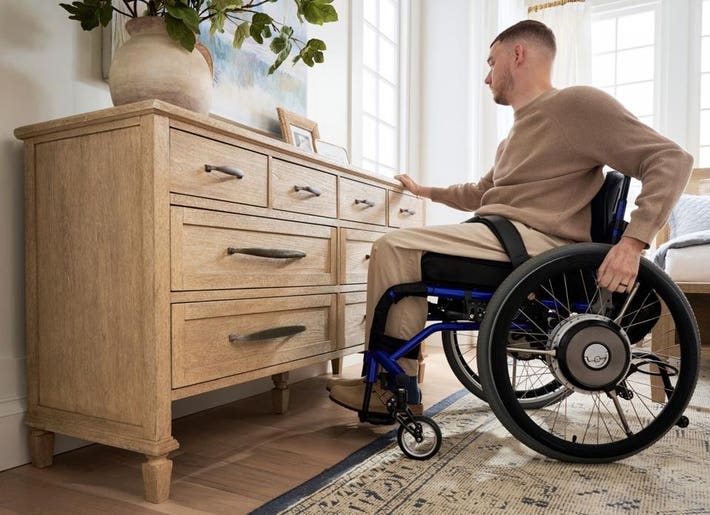Creating a home that is accessible and comfortable for all its inhabitants is a goal many homeowners strive to achieve. Wheelchair-accessible pantry shelves are a significant step in this direction, offering convenience and independence to individuals with mobility challenges. In this article, we will explore the importance, design considerations, and benefits of these specialized shelves.

Understanding the Need for Wheelchair-Accessible Pantry Shelves
For individuals using wheelchairs, reaching for items stored in traditional pantries can be a daunting task. The design of standard pantry shelves often overlooks the needs of those with limited reach and mobility, making everyday tasks more challenging. Wheelchair-accessible pantry shelves address these challenges by offering a design that anyone can use comfortably.
Benefits of Wheelchair-Accessible Pantry Shelves
These shelves not only improve accessibility but also enhance the overall functionality of a kitchen. By ensuring that all items are within easy reach, homeowners can significantly increase their kitchens efficiency and usability. Furthermore, they contribute to a safer environment by reducing the need for reaching or stretching that could lead to falls or injuries.
Key Design Features of Wheelchair-Accessible Pantry Shelves
Adjustable Shelving
One of the most important features of wheelchair-accessible pantry shelves is their adjustability. Shelves that can be moved up or down allow individuals to customize their pantry to suit their specific needs, ensuring that everything is within easy reach.
Pull-Out Shelves
Pull-out shelves are another essential feature, as they allow users to easily access items at the back of the shelf without the need to reach or strain. This feature is particularly useful for individuals with limited upper body mobility.
Lazy Susans and Rotating Shelves
Incorporating lazy Susans or rotating shelves can further enhance accessibility. These allow users to spin the shelf to bring items to the front, making it easier to access everything stored there.
Height Considerations
It is crucial to consider the height of pantry shelves. They should be installed at a height that allows a person in a wheelchair to access all areas comfortably. Typically, the optimal height for the top shelf is around 48 inches from the floor.
Materials and Durability
Choosing the right materials for your pantry shelves is vital for ensuring durability and long-lasting use. High-quality materials like solid wood or metal are advisable as they can withstand the daily wear and tear.
Installation Process for Wheelchair-Accessible Pantry Shelves
Professional vs. DIY Installation
Homeowners can choose between professional installation and a DIY approach. While a DIY installation can be more cost-effective, hiring professionals ensures that the shelves are installed correctly and safely. This decision often depends on the homeowners budget and level of expertise.
Tools and Equipment Needed
For those opting for DIY, having the right tools and equipment is essential. This includes a drill, level, measuring tape, and the appropriate hardware for securing the shelves to the wall. It is crucial to follow the manufacturers instructions for a safe and secure installation.
Enhancing Kitchen Accessibility Beyond Pantry Shelves
Installing wheelchair-accessible pantry shelves is a significant step towards creating a more inclusive kitchen. However, homeowners can enhance accessibility further by considering other aspects such as home acoustics and home bars. These additions can make the kitchen even more functional and enjoyable for everyone.
Smart Kitchen Technology
Integrating smart technology into the kitchen can also benefit individuals with mobility challenges. Devices such as voice-activated assistants and smart appliances can make everyday tasks easier and more efficient.
Cost Considerations for Wheelchair-Accessible Pantry Shelves
The cost of installing wheelchair-accessible pantry shelves can vary significantly based on the design, materials, and installation method chosen. It is essential for homeowners to consider their budget and explore different options to find a solution that meets their needs without compromising on quality.
Financial Assistance and Grants
There are various financial assistance programs and grants available to help offset the costs of home modifications for accessibility. Homeowners should research these options to see if they qualify for any financial aid.
Conclusion
Incorporating wheelchair-accessible pantry shelves into your kitchen design is a valuable investment in creating a more inclusive and functional home. By considering the unique needs of individuals with mobility challenges, homeowners can create a space that is both practical and welcoming for everyone.
FAQs
What is the ideal height for wheelchair-accessible pantry shelves?
The ideal height for the top shelf is around 48 inches from the floor, allowing easy access for individuals in wheelchairs.
Can I install wheelchair-accessible pantry shelves myself?
Yes, homeowners can opt for a DIY installation if they have the necessary tools and skills. However, professional installation may be advisable for those who want to ensure safety and accuracy.
Are there financial assistance programs for installing these shelves?
Yes, there are various programs and grants available to help offset the costs of home modifications for accessibility. Homeowners should research these options to determine their eligibility.

Further Reading
For more information on creating accessible homes, visit the ADA requirements for homes page.
This article contains affiliate links. We may earn a commission at no extra cost to you.

